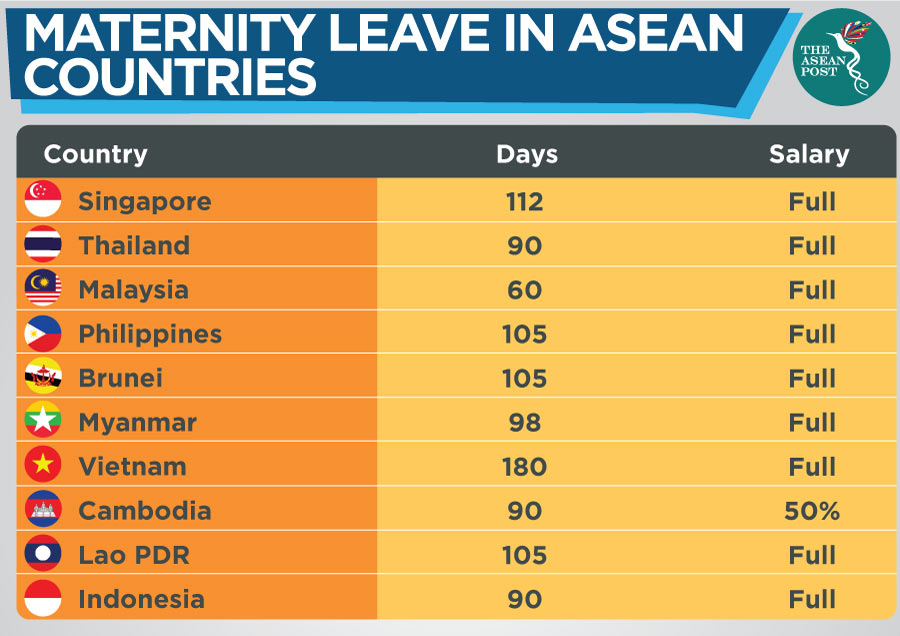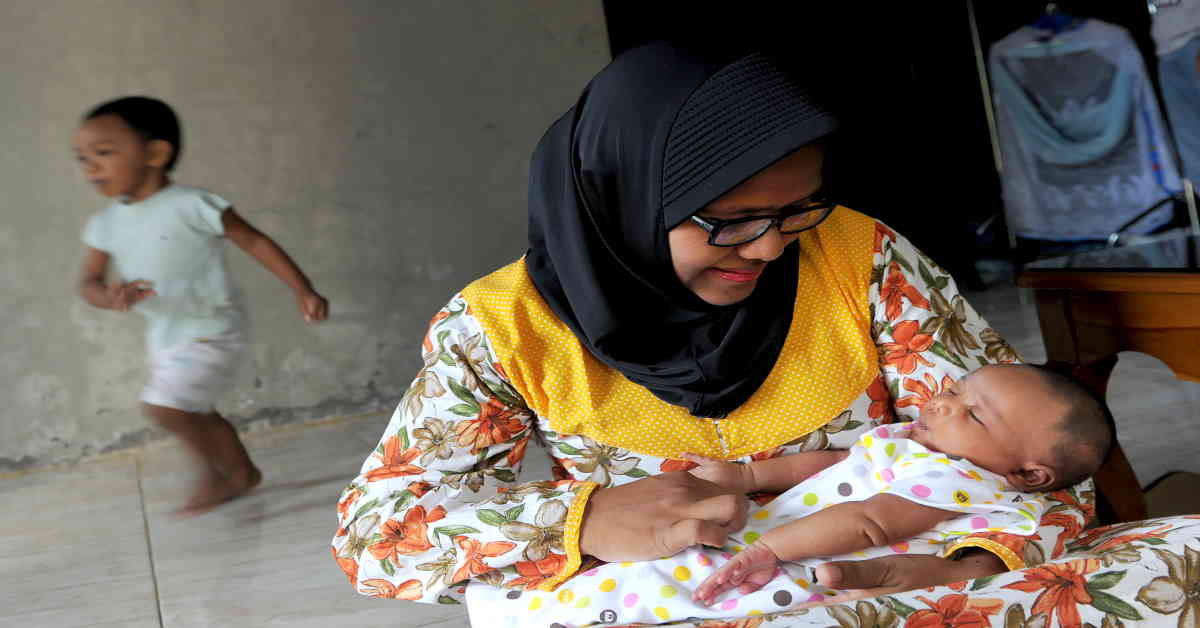In Southeast Asia, efforts have been made to tap women’s potential by improving the business and financing environment. There are also a growing number of women rising through the ranks, starting companies and deciding on industry policy.
Despite these achievements, women, especially mothers, still experience discrimination at work. According to a 2016 survey by Women’s Aid Organisation (WAO) in Malaysia, more than 40 percent of women in the workforce experienced pregnancy discrimination. This discrimination includes denial of promotion, prolonged probation period and a high likelihood of job loss.
Maternity protection
Maternity protection is a fundamental right, and according to the International Labour Organization (ILO), virtually all countries have adopted legislative provisions on maternity protection at work. Pregnant working women are entitled to paid maternity leave, maternal and child health care and breastfeeding breaks. In Southeast Asia, Vietnam and Singapore lead with the most maternity leave available for new mothers with 180 days and 112 days, respectively.
Early this year, President Duterte of the Philippines increased the benefits of new working mothers to include more paid days for maternity leave from 60 days to 105 days. This new law hopes to bring more women to the workforce in a nation with low female participation in Southeast Asia. According to 2019 International Labour Organization (ILO) data, women’s labour participation rate in Malaysia (51 percent), Myanmar (48 percent) and the Philippines (46 percent) are the lowest in ASEAN.
The Philippines’ new law also allocates seven days to new fathers, while single mothers will get an additional 15 days.
According to Sandiva, an Indonesian-based legal firm, expectant mothers in Indonesia are entitled to 90 days of maternity leave before giving birth and another 90 days after childbirth, totalling 180 days. However, in practice, most mothers only take leave after childbirth.
Although Malaysia is among the more developed countries in the region, it provides the lowest maternity leave with only 60 days. During Malaysia’s recent 2020 Budget announcement, it was proposed that maternity leave be increased from 60 paid days to 90 days.
“Maternity leave is essential for a new mother as, after birth, she needs to take good care of herself to rebuild her strength and will need plenty of rest, good nutrition and help,” said M. Kula Segaran, Malaysia’s Human Resources Minister.

However, this proposal has been met with objections from many parties citing economic impact as the main reason. In spite of this, some companies are already enhancing their maternity protection. For example, Citi Malaysia, which recently increased maternity leave to 180 days and paternity leave to 10 days.
Discrimination and dismissal
In addition to stipulated protective measures by the ILO, women are also protected against discrimination and dismissal in relation to maternity, and a guaranteed right to return to work after leave. However, women still get passed over for promotions, are side-lined and even fired for being pregnant.
In Indonesia, women are “targets of exploitation,” said Nining Elitos, chairman for the Congress Alliance of Indonesian Labor Unions, adding that despite the labour law, employers still refuse pregnant women maternity leave. Some employers even dismiss their pregnant women workers.
According to the Convention on the Elimination of All Forms of Discrimination against Women (CEDAW), penalising women for having children, violates their human rights. The Convention specifically states that women have the right to have a family and work while being appropriately rewarded for it.
It is also discriminatory for a prospective employer to ask questions about a women’s marital status, pregnancy status, age or sexual orientation during job interviews. Based on the WAO’s survey, 40 percent of women were asked by interviewers about their pregnancy plans.
While more fathers are taking time off to look after their new-born babies, it is still a universal assumption that mothers are the ones who take care of the children. This assumption has continued to make stagnant any progress in increasing paternity leave, relegating it to only a few days for fathers.
Paternity leave encourages father-child bonding, which is essential for a child’s health. Mothers also benefit from paternity leave, through increased support and additional time for them to heal physically and emotionally after childbirth. Offering extended paternity leave also supports women’s attachment to the workforce, whose increased participation will benefit the overall economy.
Women are also subjected to baseless perceptions that they are not as good at their jobs after returning from maternity leave because they would not be as committed, would be unwilling to stay late, or would request additional time off.
“The capability of women professionals is often questioned once they take maternity leave, or have significant lapses in their career trajectories,” said Joanne Chua, account director at Robert Walters Singapore, a leading recruitment consultancy.
Empowering mothers
Companies and organisations must get rid of biases against women who take maternity leave to ensure they are fully empowered when they re-enter the workforce. Returning women represent a rich talent pool that can help to overcome skill shortages, increase diversity in the organisation and consequently provide measurable benefits such as decreased turnover rates and higher business gains. And women should not be made to choose between healthy ambition and child-rearing as they’re both rewarding.
The employment sector must identify with the needs of today’s working generation, where the quality of work and family can coexist.
Related articles:
